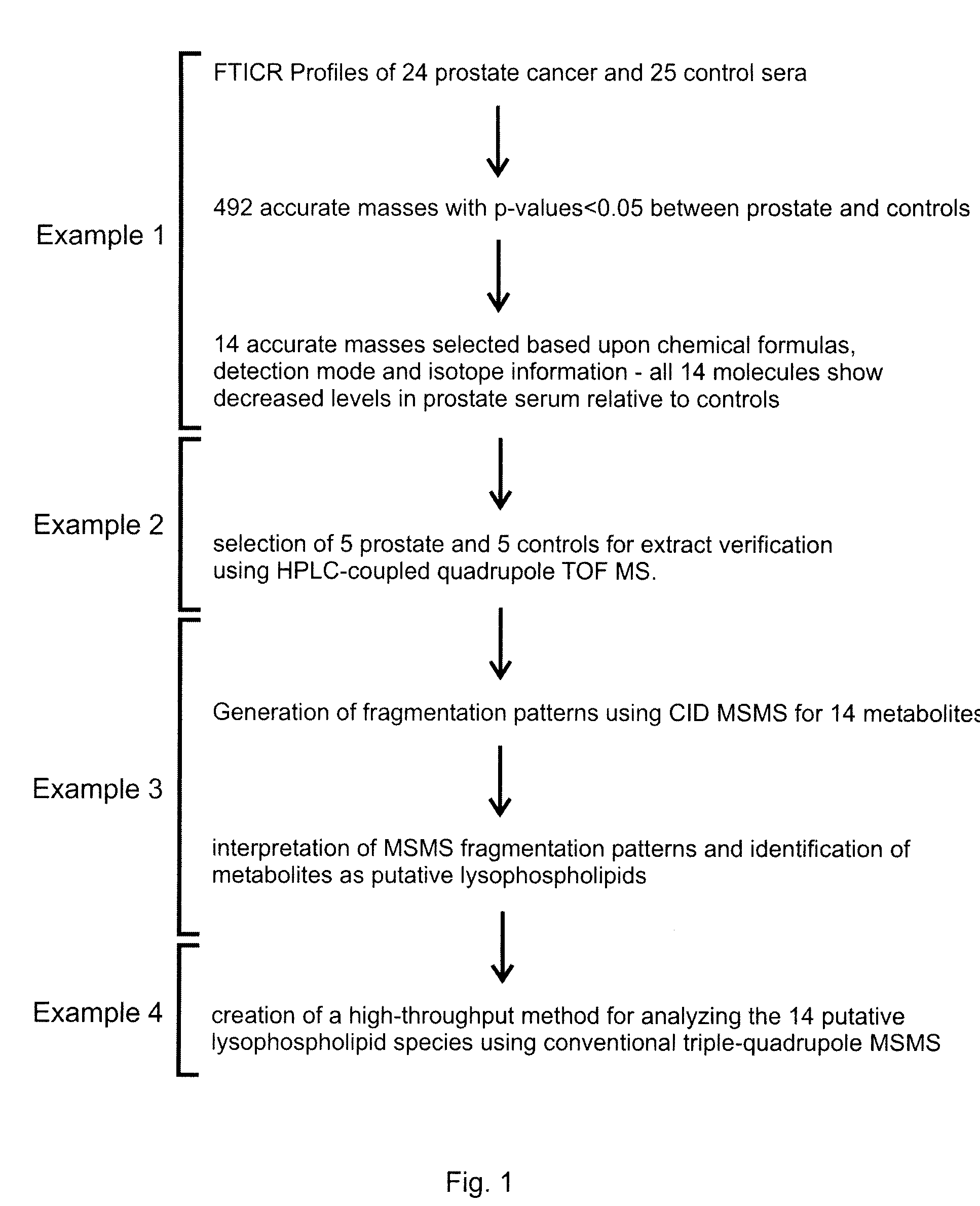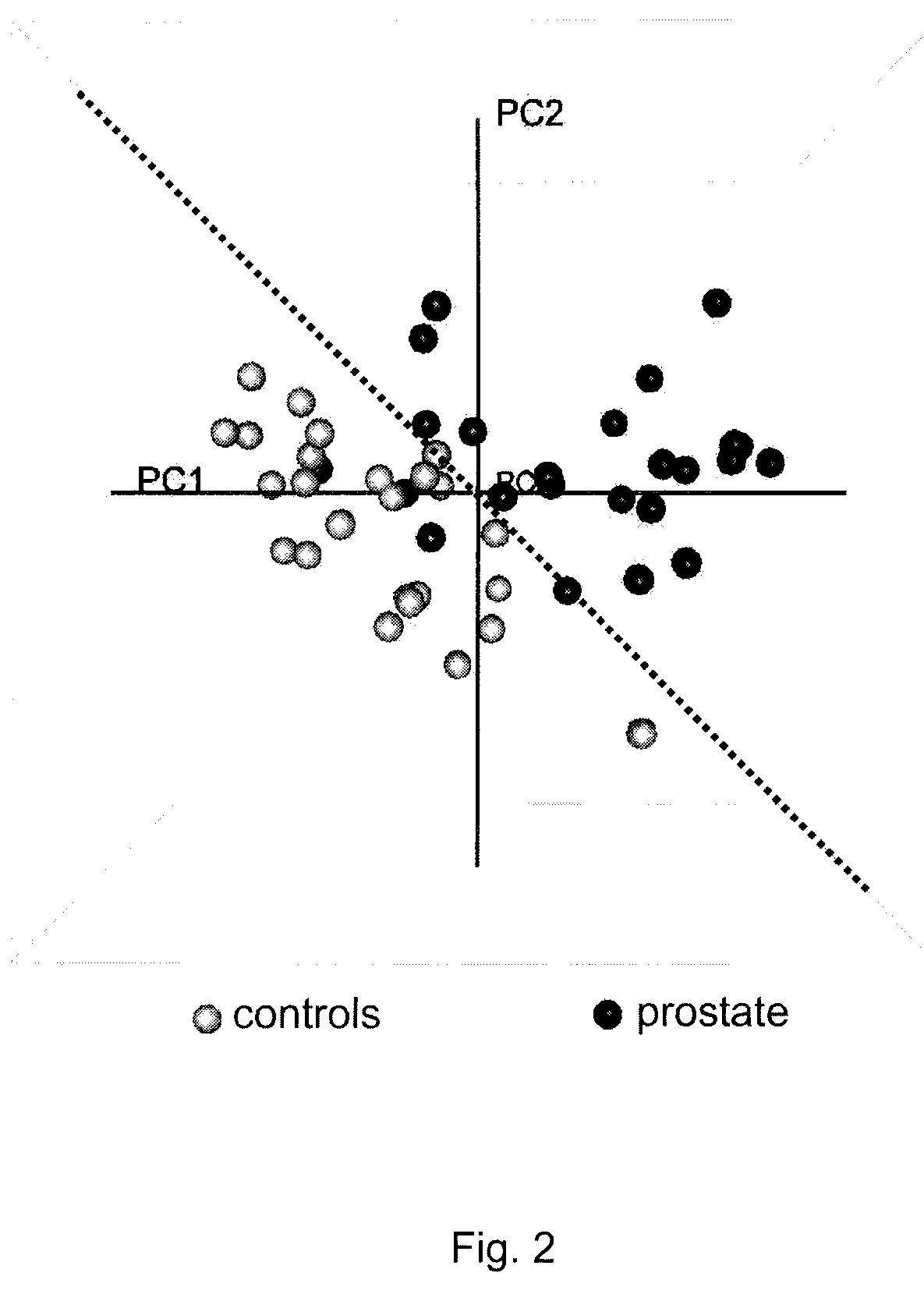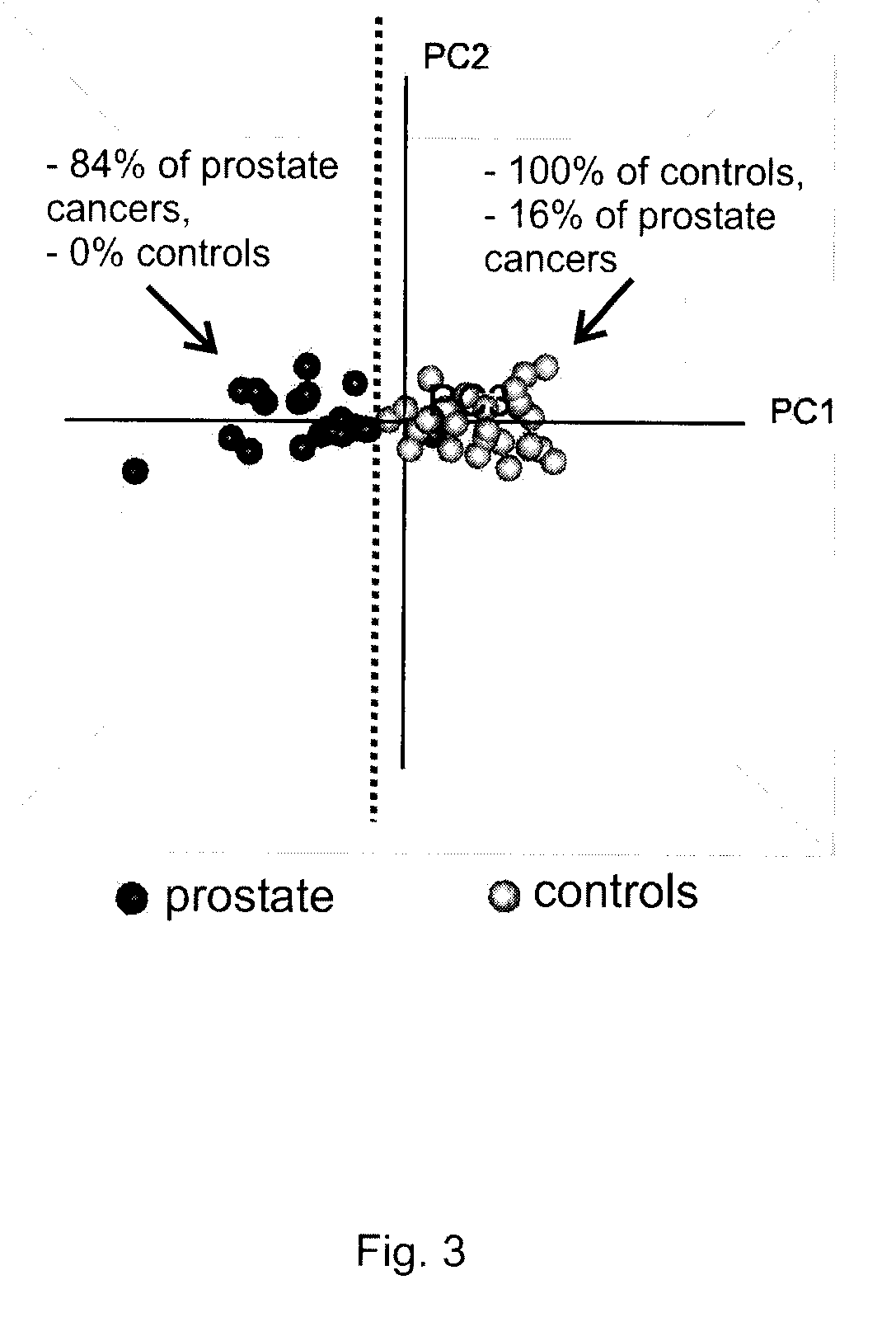Biomarkers useful for diagnosing prostate cancer, and methods thereof
a biomarker and prostate cancer technology, applied in the field of small molecules or metabolites, can solve the problems of inability to predict the course of the disease, further complicated diagnosis, and controversial prostate screening with conventional methods, so as to improve the overall diagnostic performance of each test, improve the ability to detect prostate cancer or the risk, and save lives.
- Summary
- Abstract
- Description
- Claims
- Application Information
AI Technical Summary
Benefits of technology
Problems solved by technology
Method used
Image
Examples
example 1
Discovery and Identification of Differentially Expressed Metabolites
[0178]Differentially expressed metabolites are identified in clinically diagnosed prostate cancer-positive patients and normal patients.
[0179]Clinical Samples. For the prostate cancer screening assay described, serum samples were obtained from representative populations of healthy prostate cancer-free individuals and of professionally diagnosed prostate cancer-positive patients (SeraCare LifeSciences, Inc). The biochemical markers of prostate cancer described below were derived from the analysis of 24 serum samples from prostate cancer-positive patients and 25 serum samples from healthy controls. Samples in both groups were from a diverse population of individuals, ranging in age, ethnicity, weight, occupation, and displaying varying non-prostate cancer-related health-states. All samples were single time-point collections, and the prostate cancer samples were taken either immediately prior to, or immediately followi...
example 2
Independent Method Confirmation of Discovered Metabolites
[0196]The metabolites and their associations with the clinical variables described in Example 1 were further confirmed using an independent mass spectrometry system. Representative aqueous sample extracts from each variable group (10 controls and 9 prostate cancers) were re-analyzed by LC-MS using an HP 1050 high-performance liquid chromatography, or equivalent interfaced to an ABI Q-Star, or equivalent mass spectrometer to obtain mass and intensity information for the purpose of identifying metabolites that differ in intensity between the clinical variables under investigation. Data were acquired using full-scan detection in both positive and negative ESI modes, and the resulting spectral data calibrated and aligned using Phenomenome Profiler software. We identified a retention time window (time at which molecular species are eluting off of the HPLC column), of approximately 28 to 34 minutes under the specified chromatographi...
example 3
MS / MS Characterization of the 14 Metabolite Subset
[0197]Various characteristics can be used for structure elucidation of metabolites include accurate mass and molecular formula determination, polarity, acid / base properties, NMR spectra, and MS / MS or MSn spectra. These data can be used as fingerprints of a particular metabolite and are unique identifiers of a particular metabolite regardless of whether the complete structure has been determined. The data include:
[0198]1. LC retention time. The extracts containing the metabolites of interest are subjected to reverse phase LC-MS using a C18 column and analysis by MS to determine their retention time under standardized conditions. When the extracts were subjected to LC / MS analysis, all 14 metabolites co-eluted within 26-34 min range.
[0199]2. MS / MS spectra. The 14 metabolites of interest were further characterized by performing MS / MS fragmentation using collision induced dissociation (CID). This MS / MS analysis was performed in real time ...
PUM
 Login to View More
Login to View More Abstract
Description
Claims
Application Information
 Login to View More
Login to View More - R&D
- Intellectual Property
- Life Sciences
- Materials
- Tech Scout
- Unparalleled Data Quality
- Higher Quality Content
- 60% Fewer Hallucinations
Browse by: Latest US Patents, China's latest patents, Technical Efficacy Thesaurus, Application Domain, Technology Topic, Popular Technical Reports.
© 2025 PatSnap. All rights reserved.Legal|Privacy policy|Modern Slavery Act Transparency Statement|Sitemap|About US| Contact US: help@patsnap.com



